Have you ever considered doing a Vipassana retreat? Do you know the benefits of meditation? Here you can find out about my Vipassana experience, and also the reasons why you should incorporate meditation into your daily life.
I’m not sure when my interest in meditation started. Probably after learning that it’s one of the 9 habits of wealthy people and also reading about its benefits:
• it improves concentration, information processing and decision-making;
• it increases self-awareness, self-acceptance and happiness;
• it reduces stress and anxiety;
• it benefits one’s cardiovascular and immune health;
• it makes you stronger against pain.
Furthermore, meditation develops compassion, love, patience, generosity and forgiveness and thus is a perfect match with my holistic lifestyle.
I’ve been trying to take a meditation course for at least four years, ever since living in New York City, but the courses never really fit into my schedule.
When I planned my 5-month trip to Asia, one of my goals was to finally take a meditation course.
I decided to follow a friend’s recommendation and take a course in Vipassana, one of at least 20 types of meditation techniques.
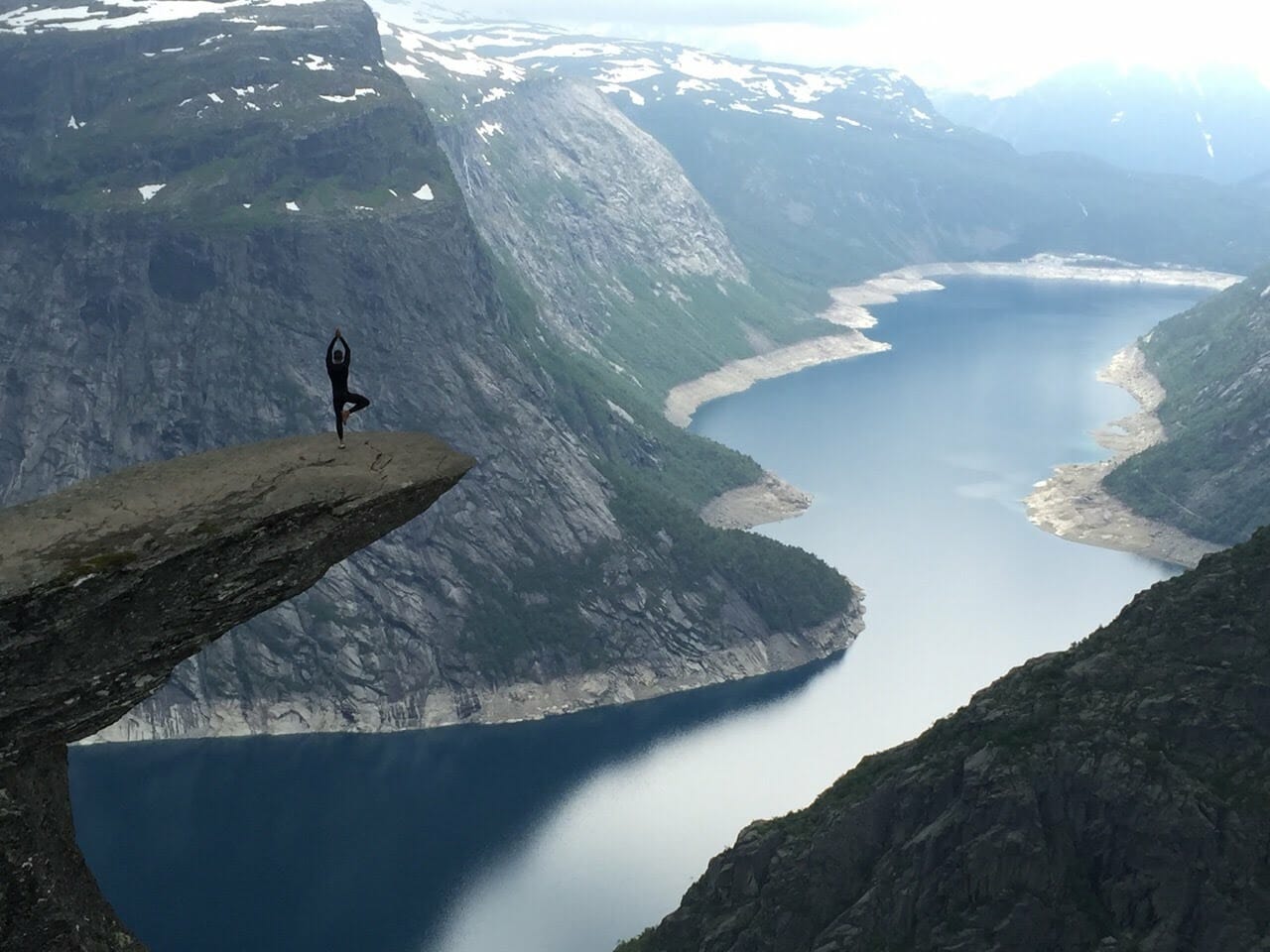
Table of Contents
Vipassana Meditation
Vipassana is one of India’s most ancient techniques and has been taught for more than 2500 years. In fact, it is believed that Vipassana was developed as a technique by the Buddha.
The main purpose of Vipassana meditation is to make us good human beings and to develop love and compassion for ourselves and the people surrounding us.
This non-sectarian technique is a way of self-transformation through self-observation. It uses mindfulness of breathing, thoughts, feelings and actions to gain insight into the true nature of reality and experience the universal truth of impermanence, suffering and egolessness.
The technique consists of observing sensations throughout the body, understanding their nature (gross or subtle), and developing equanimity by learning not to react to them.
Meditators are encouraged to scan their bodies from head to feet, and feet to head, looking for sensations (pain, heat, itching, pressure, pulsing, vibration, etc), acknowledge those sensations, and understand that they will arise and then pass. There should be no attachment or aversion formed to these sensations.
During the 10-day residential vipassana retreat, the mind is trained to become sharper in order to recognize those sensations.
Actually, the entire practice is mental training, and because of that, people interested in learning Vipassana meditation should take a course.
The 10-day Vipassana Retreat
During the Vipassana retreat, participants learn the basics of Vipassana meditation as well as two other techniques (Anapana Sati and Metta).
The technique is taught step-by-step each day and practised sufficiently to experience its benefits.
In order to attend the meditation course, participants are required to follow a rigorous code of discipline, which includes:
- to abstain from killing any being;
- to abstain from stealing;
- to abstain from any sexual activity;
- to abstain from telling lies;
- to abstain from any intoxicant;
- acceptance of the teacher and the technique;
- noble silence (any form of communication with other students is prohibited);
- music, reading and writing are not permitted;
- physical contact, outside contact, yoga and practising exercise are not allowed…
This code of discipline is for the benefit and protection of the meditators and is an integral part of the meditation and the process of self-purification by introspection.
For me, with the exception of maintaining noble silence, the rules were not that hard to follow.
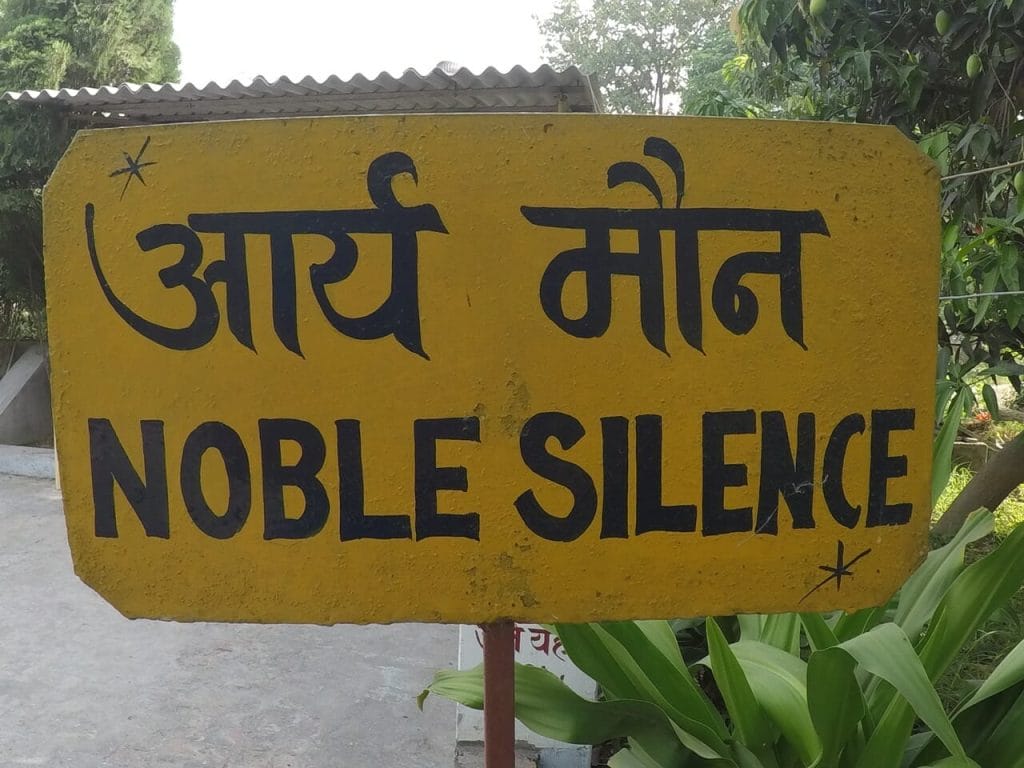
The Vipassana retreat is divided into three steps:
1. The first is to abstain from killing, stealing, engaging in sexual activity, speaking falsely, and ingesting intoxicants for the period of the course.
2. The second is to develop some mastery over the mind by learning to fix one’s attention on the breathing (Anapana technique); observing sensations throughout the body, understanding their nature, and developing equanimity by learning not to react to them (Vipassana technique).
3. The last step is to learn the meditation of loving kindness or goodwill towards all (Metta technique).
The Vipassana retreat begins with a 2:00 – 4:00 PM registration period and orientation, followed by 10 days of full meditation, and ends on the morning of the 11th day, at about 7:30 AM.
Vipassana Course Schedule
The Vipassana retreat has a very strict timetable that all students are required to follow:
- 4:00 AM Morning wake-up bell
- 4:30-6:30 AM Meditate in the hall or your room
- 6:30-8:00 AM Breakfast break
- 8:00-9:00 AM Group meditation in the hall
- 9:00-11:00 AM Meditate in the hall or your room according to the teacher’s instructions
- 11:00-12:00 noon Lunch break
- 12noon-1:00 PM Rest and interviews with the teacher
- 1:00-2:30 PM Meditate in the hall or your room
- 2:30-3:30 PM Group meditation in the hall
- 3:30-5:00 PM Meditate in the hall or your own room according to the teacher’s instructions
- 5:00-6:00 PM Tea break
- 6:00-7:00 PM Group meditation in the hall
- 7:00-8:15 PM Teacher’s Discourse in the hall
- 8:15-9:00 PM Group meditation in the hall
- 9:00-9:30 PM Question time in the hall
- 9:30 PM Retire to your own room-Lights out
It is expected that students will remain at the centre for the entire period of the course.
So, you must be sure that you really want to take the course and be especially determined to make the effort towards the end, otherwise, you’ll waste your time and may not get any benefit.
The Vipassana Meditation Center in Varanasi
You don’t have to go to India to take this course, as there are 176 centers scattered all over the world. However, most of them are in Asia (130 centers).
I took the course at the Sarnath Vipassana Center, which is located 3.5 km from Dhammacakkappavattana Sutta, where Buddha reportedly gave his first speech. It’s a 1h tuk-tuk drive from Varanasi.
When I arrived at the Sarnath-Varanasi center, I liked it immediately!
The center is situated in beautiful countryside and has a very serene atmosphere.
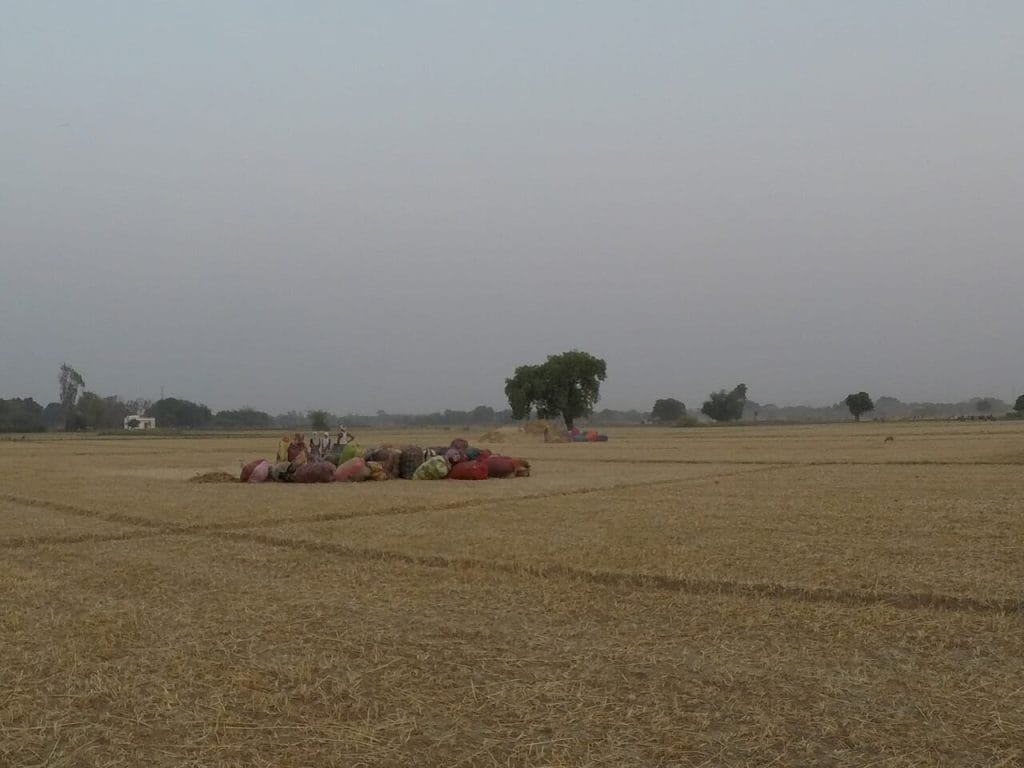
There are plenty of green areas, including small farms, the main hall, rooms for women and men on opposite sides, refectories (men and women), an office, a small hall, and a pagoda.
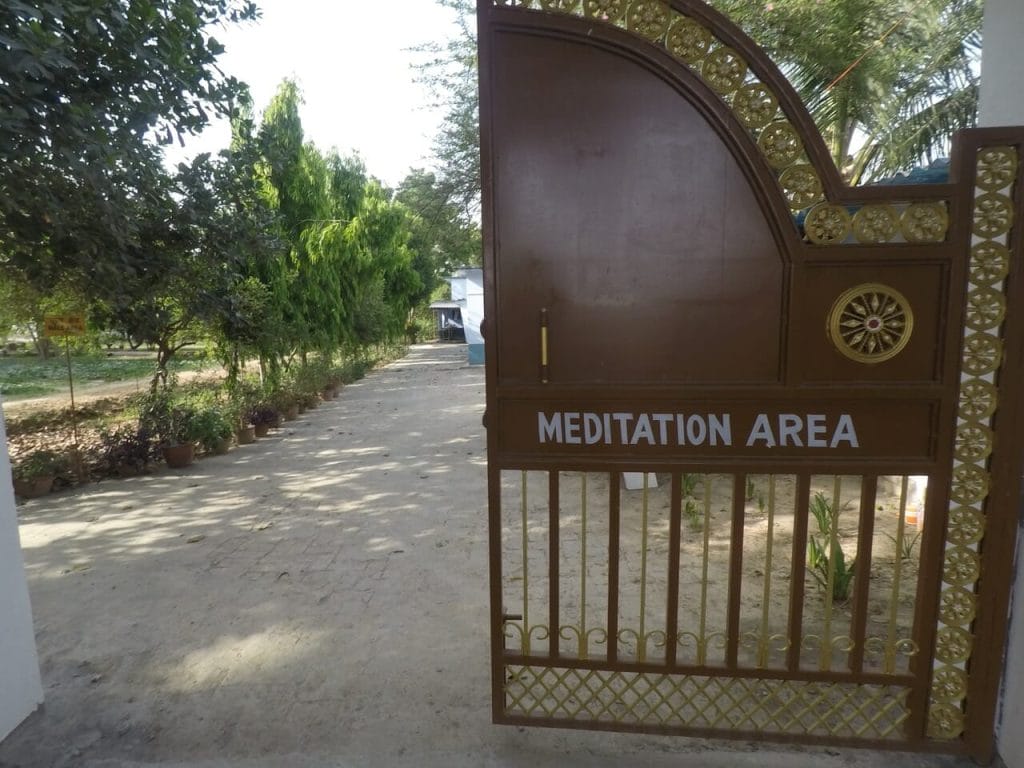
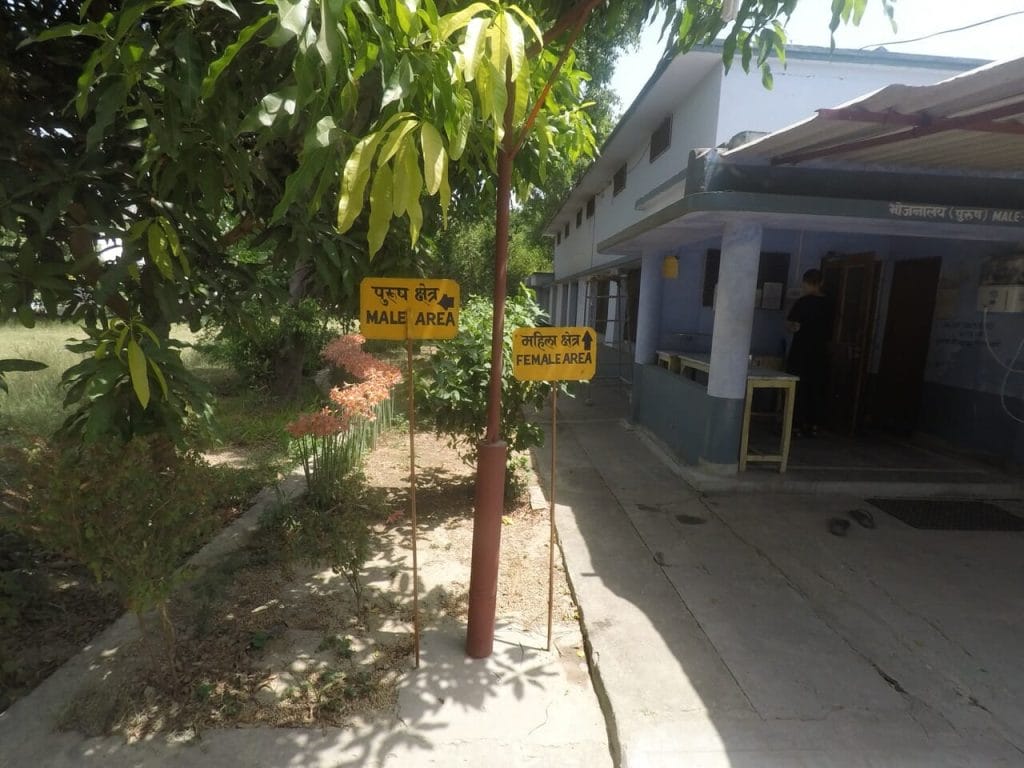
My 10-Day Vipassana Retreat Experience
I had never heard of Vipassana meditation until my friends Carlo and Alda suggested that I take the course.
While reading the course outline, and particularly the timetable, the facts that immediately stood out, were the noble silence and no-food-after-lunch rules.
Later, a few weeks before the course start date and while completing my application, I read everything again. This time the fact that I have to wake up every day at 4:00 AM really got my attention…
But when I set a goal, I work hard to get it, and those facts would not be the thing that would dissuade me from finally taking a meditation course.
So I completed my application three weeks before the course start date, and from then on, couldn’t contain my excitement.
I arrived at the center at 3:45 PM on the 17th of April 2017, and there were already some participants there. While there were quite a few foreigners, there were also many Indian people attending the course.
As we were still allowed to talk, I took the opportunity to meet some of them while waiting for my turn to fill in the various forms and get the key to my room. It was while doing this, that one participant abruptly decided to leave.
I wanted to talk to him to ask why he wasn’t staying but it was too late, he’d already gone. Clearly, this Vipassana retreat wasn’t for everyone!
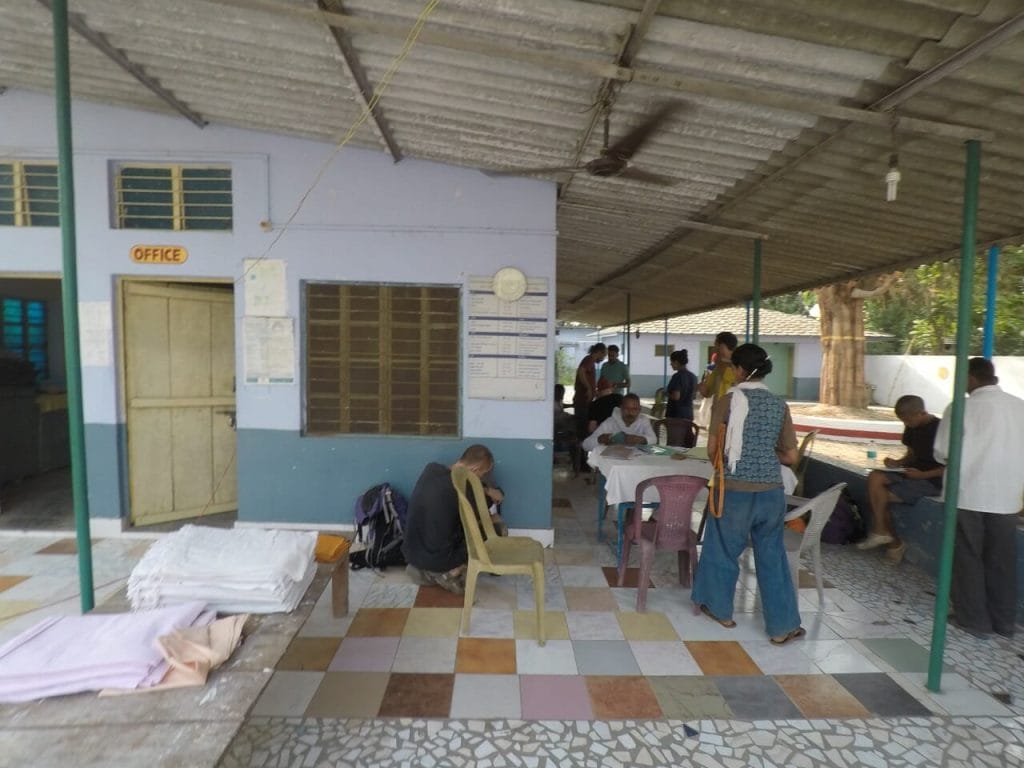
However, I was sure that I wanted to do this, so completed my forms, got a room assigned to me and headed to the men’s accommodation.
The room was very, very simple. There was a bed with a thin mattress, a mosquito net, some shelves, a fan, and a bathroom with two buckets but no shower.
Everything was full of dust, especially the mattress, so I cleaned my room.
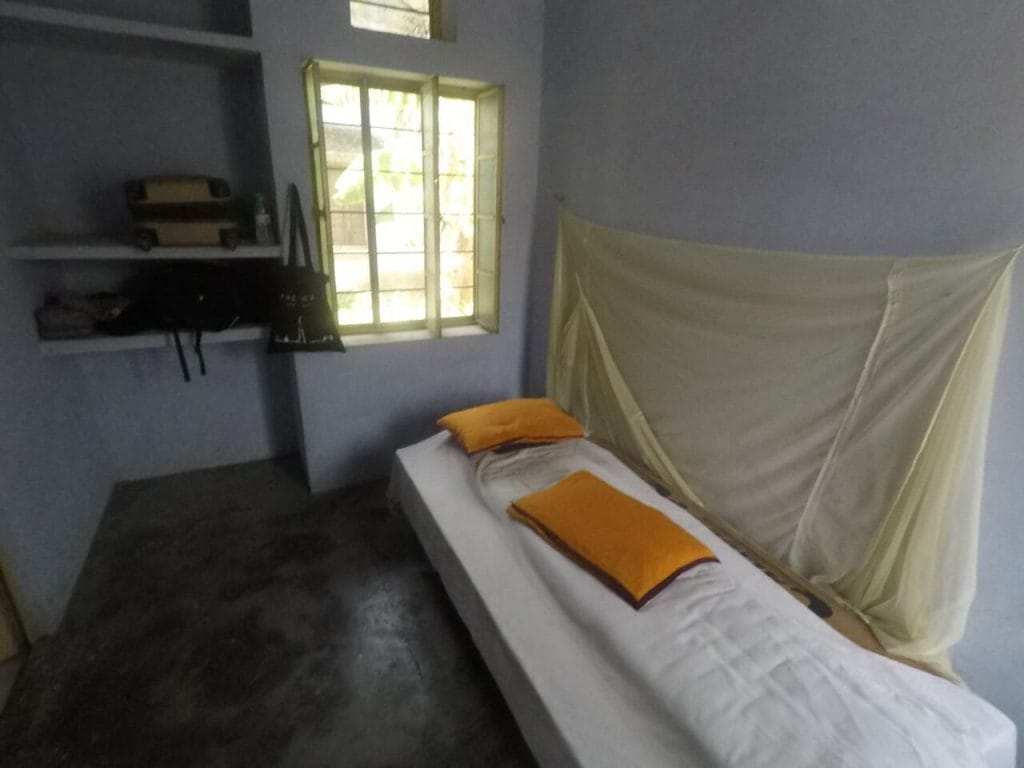
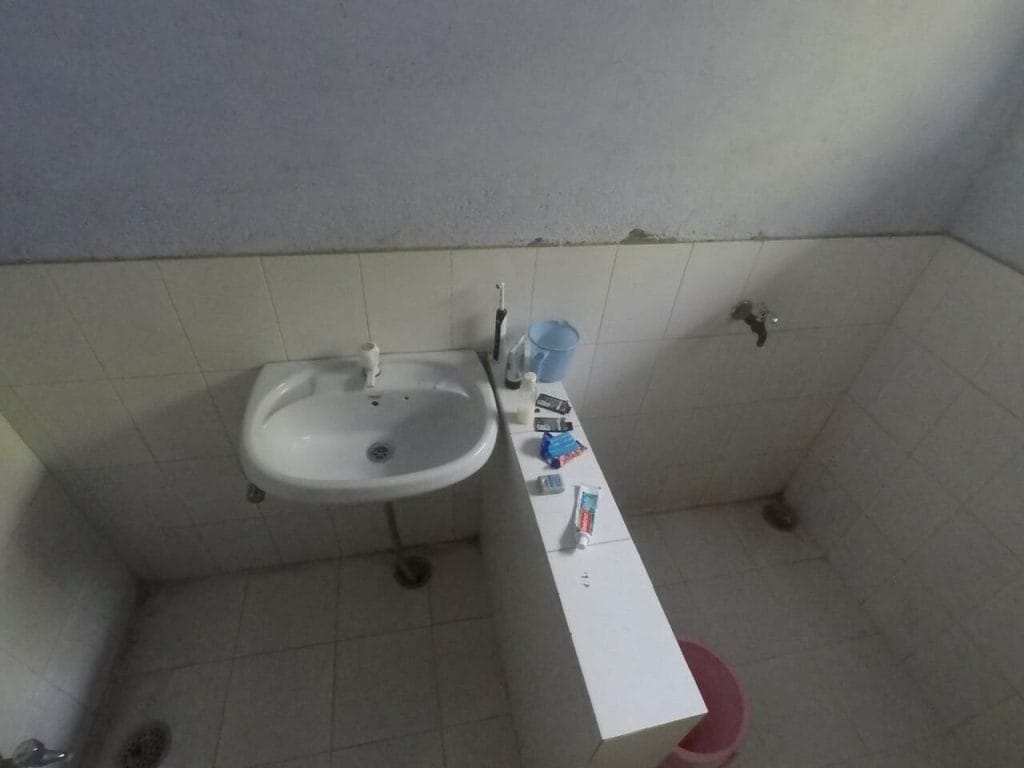
Later, I made two more friends: a young Swiss guy and a blogger from San Francisco.
At 5:00 PM we headed to the refectory for our first vegetarian meal, and the sound of the spoons hitting the aluminum plates made me feel like I was in a prison…
Don’t get me wrong, the center doesn’t look like a prison, but it does look a bit like a rehabilitation center.
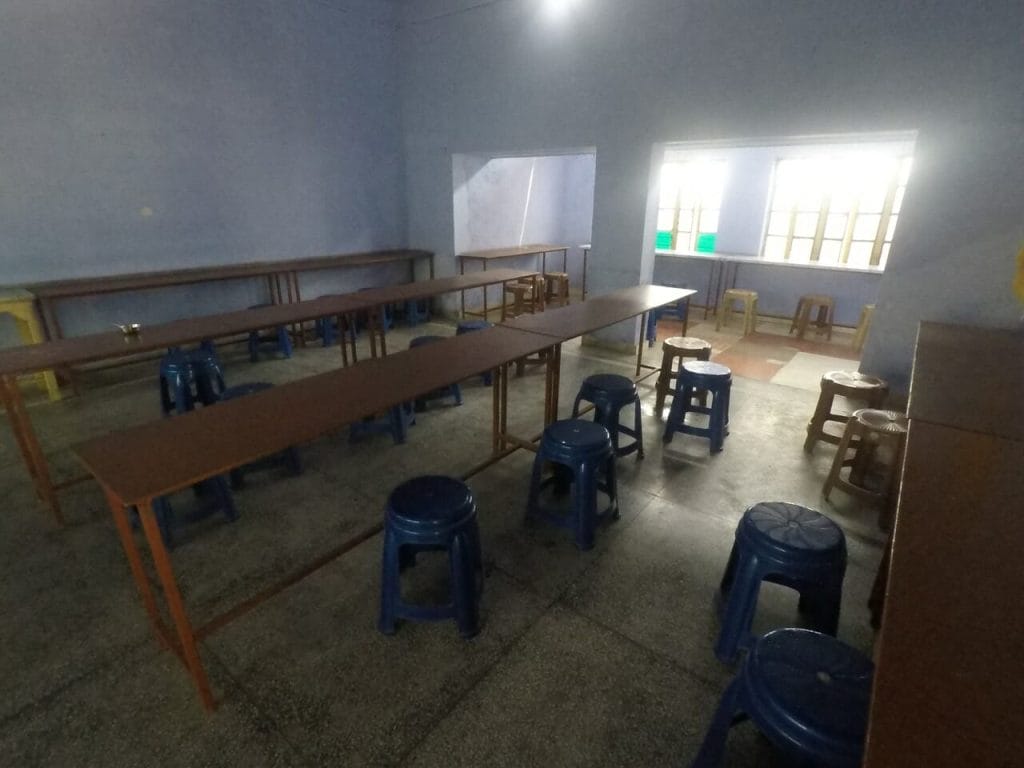
At 7:00 PM we all went to the octagonal main hall, Dhamma Hall, to receive instructions about the Vipassana retreat, and also to meditate.
The instructor highlighted the code of discipline, and our schedule, told us about the chanting and explained what we would be doing the next day.
After that, we all started practicing the Anapana meditation, which is based on only observing your breathing.
The fans were switched off, and suddenly, we had a glimpse of what was waiting for us for the next 10 days…
From this point, all communication ceased. We were allowed to talk about only what was of the utmost necessity to the instructor and his assistants, but everything else was to be done in silence.
Bells were our wake-up call and the signal for all activities.
The first morning I woke up to the sound of a bell ringing, got dressed quickly and then waited for the second call at 4:30 AM. But it turned out that I actually hadn’t heard the first call at 4:00 AM, so was at least half an hour behind in my schedule.
Of course, I got lost and had to ask a staff member where to go. Not the best start to my 10-day Vipassana retreat!
I arrived at the Dhamma Hall late, and everyone was already there meditating. I sat down quickly on two cushions, which were made of the same thin material as the mattress in my room, and started to observe my respiration.
But my first two hours of sitting were very painful! I could sit cross-legged for no longer than 10 minutes before my back started hurting very much.
All the while, I was changing positions to try to find one that I could sustain for longer without feeling pain in my back…
If you consider the fact that I went from zero practice and experience to 10 hours of daily meditation, you can imagine how difficult it was…
On top of that, my mind was wandering all the time so I was very distracted.
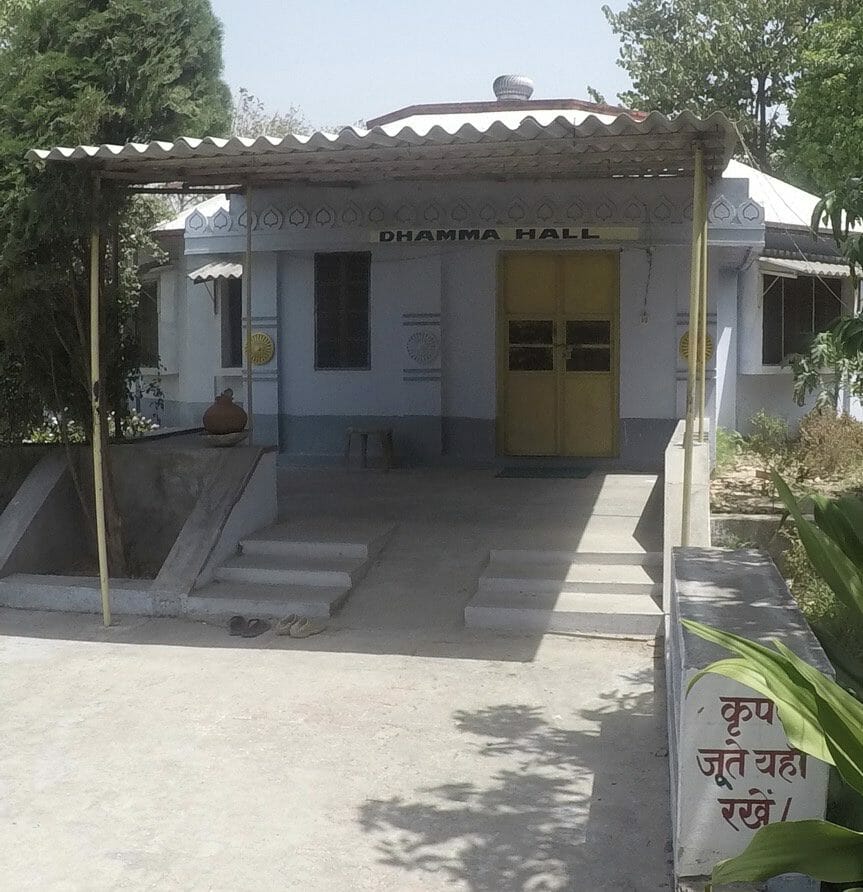
At 6:00 AM the instructor switched on a record, and a very deep voice started chanting in Hindi and traditional Pali (the language of the time of Buddha).
At 6:30 AM we left the hall for breakfast and I noticed that my posture was slightly better.
The daily breakfast was very good. We had at least one fruit every time, oatmeal porridge, chai and Indian food.
After breakfast, we had an hour to rest and walk. At this time, I usually stretched my body, especially my back (lying down on my bed and hugging my legs), and slept.
At 8:00 AM we went back to the Dhamma Hall for a three-hour meditation.
Again sitting was very painful, and it was so incredibly hot, that it became almost unbearable.
Everyone was sweating like a pig! Even I, who don’t usually sweat, was drenched. The sweat was literally pouring down. I couldn’t believe that it was already so hot so early in the day…
The fans were switched off, because we had to pay attention to our respiration, and the heat, together with the sweat pouring down my chest and my efforts to remain seated, set my mind racing – the opposite effect of what one is trying to achieve with meditation!
I think that even the instructor realized that all 35 people there were boiling, and sent us to meditate in our room after the first hour and a half.
As we left the hall to our room, the guy from San Francisco looked so miserable that I wondered if he would stay until the end.
Meanwhile, I had to come to terms with the fact that it would be hot, around 40C (104F), every day. I had to learn to ignore my sweat, or at least not to be bothered by it.
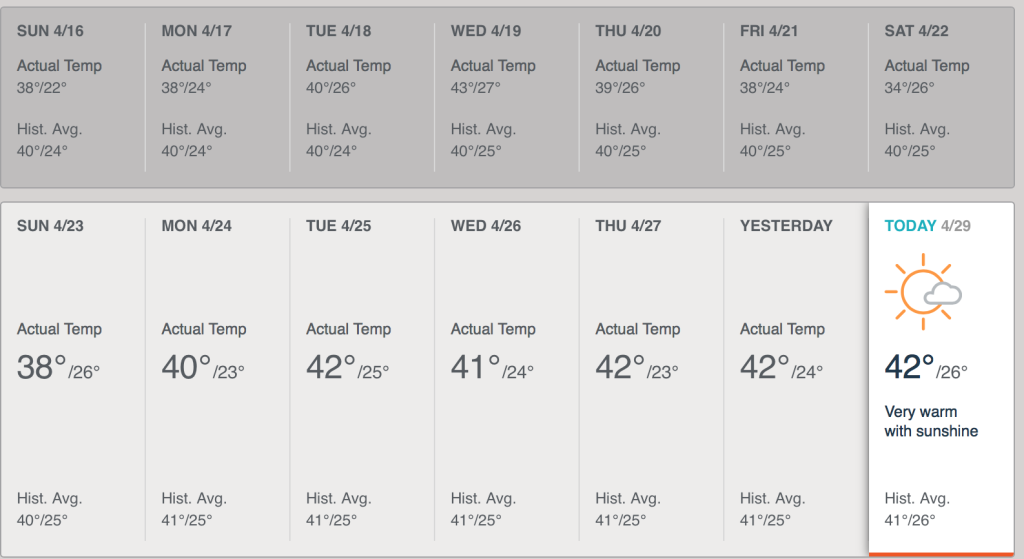
The “meditation” in the room was much better because I was able to switch on the fan and sit comfortably on the bed. But I ended up falling asleep, so didn’t meditate for very long, only waking up to the sound of the bell ringing.
We had a one-hour lunch, from 11 to 12, and after that, I went for the first interview with my instructor.
The professor, a bald, skinny, short man in his 60’s, listened to my objections and said that I should work harder.
When I said that I couldn’t hold the sitting position for very long because I’d never meditated before, he replied: – “Everyone goes through this stage. Double your self-confidence and you’ll be able to sit two, three, even five hours…”
I left the hall with those words (self-confidence) resonating in my mind…
Soon after, we went back to Dhamma Hall for more practice. I immediately took up a cross-legged seating position and, at first, the feeling was awesome. I thought: “I can sit like this for hours!” But a few minutes later, the pain in my back started again…
I realized I had to focus on the exercise and forget the pain, or at least learn how to deal with it.
But my mind started wandering again: I was planning a trip for 2018 and then a Katy Perry song, “California Gurls”, came into my head.
Outside, birds were singing, trees were rustling and there was also very frenetic and loud music playing…
All these distractions, while I was supposed to be just watching my breathing with a peaceful mind…
It seemed like the meditation would be much harder than what I’d thought !!

The breaks between the sessions were just long enough to get some water, go to the bathroom and stretch a little bit. Then we were back to the hall, and my pain was also back.
At 5:00 PM, we had a one-hour break to have some chai and puffed rice (the last meal of the day), and as the sun was setting, we headed back to the Dhamma hall to meditate for another hour.
Every evening, from 7:00 to 8:30 there was a discussion group, which consisted of a video explaining the technique, and giving a brief of what we will be doing the next day.
On that first night, I learned something very important. Our mind, especially mine, is always connecting facts from the past and the future, and, in doing so, trying to escape from the present. It seems like we don’t want to live in the present…
But we have to learn how to live in the present! Enjoy the present, whatever it is. If you’re just drinking some water, appreciate that glass of water and turn away from any other thought that is not related to it.
So, during the meditation when other thoughts arose, I just rejected it, saying: it’s not relevant now. And I keep doing that every time I meditate.
After the discussion group, we went back to the Dhamma Hall to meditate for another 30 min.
Finally, I returned to my room at 9:00 PM, took my second cold shower of the day, and went to bed.
The first day of meditation had ended and I tried not to think too much about the fact that I had 9 more days of heat and discomfort ahead of me…
On the morning of the second day, I rose in time and didn’t miss the wake-up bell, so it was already a much better start to the day…
The following two days were very similar to the first, but at least it wasn’t as hot. This time we had to focus our meditation on the triangle formed between the top of the nose and the mouth in order to find some sensations (2nd day); or just on the area between the nose and mouth (3rd day).
I was still in pain and changing positions, however, I could now sit cross-legged for 20min without moving, which made me feel very happy.
Besides the distractions already mentioned, we now had two more: a man burping loudly every other minute for the whole day, and another one, farting unscrupulously. I did get very annoyed, but had to learn how to also accept these for the whole course…
From the fourth day, when they started teaching the Vipassana technique, there were three mandatory one-hour sittings, where no one could leave the Dhamma Hall, change position, or even move their body.
I decided to use a chair for those sittings, once I realized I could not sit cross-legged for an hour.
Sitting on the chair was much better, even though I still had pain in my back. But then, after 45min, I started feeling pain in my buttocks and the soles of my feet…
Often, around the 40-45 minute mark, I would completely forget the meditation exercise and just pray for us to start the chanting so I knew there would only be 5min left of the session.
The fifth and sixth days were very similar, in that we had to scan our bodies for sensations.
The only difference was that on day 5, we had to do it from our heads to our feet, and the next day, we had to reverse the process, going from our feet to our heads, all day long… And the result for me was that the most common sensation I experienced was pressure, especially on my chest and chin.
Well, if it sounds boring, sitting for 10 hours, looking for sensations in the body, you can imagine what it was like with all the distractions…
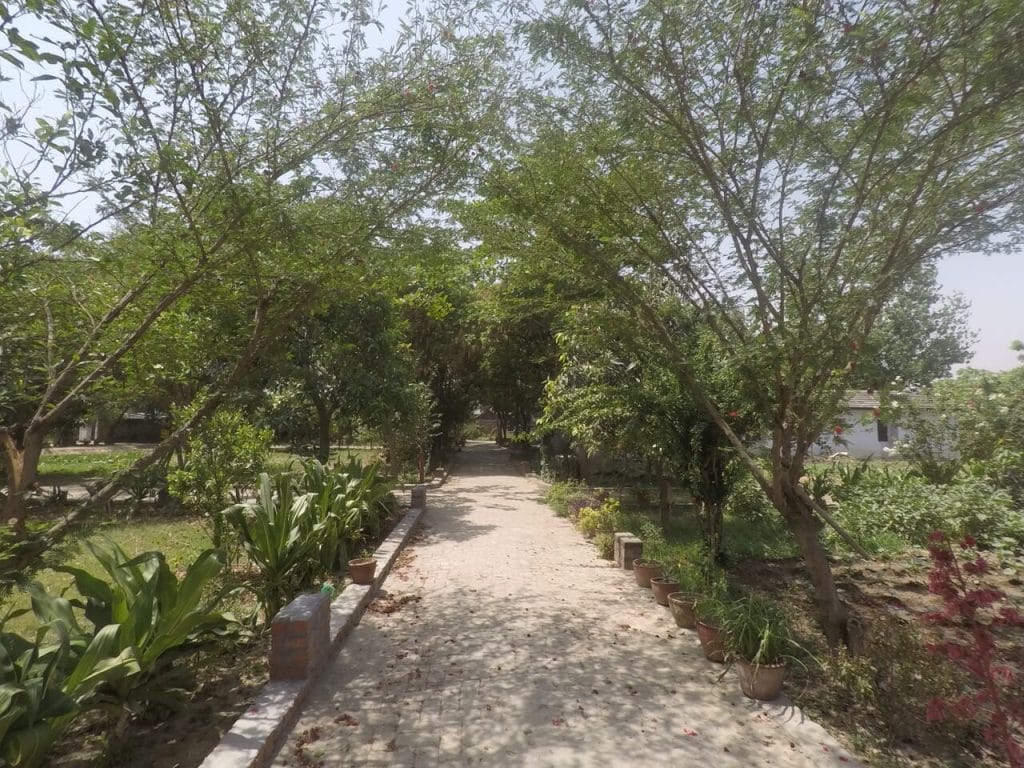
On the sixth day, I found myself thinking that the exercise wasn’t boring and that it was the only chance I had to practice it. But my mind started wandering again, plus I was having dirty thoughts…
I was there to purify my mind, how could I have dirty thoughts??? I realized that I had to be more focused and also needed to double my self-confidence in order to keep doing the exercise.
By the seventh day, I was challenging myself by trying to remain seated as long as I could.
I managed to stay seated on a chair for 1h30 and also managed 30min of sitting cross-legged. I was so happy and proud of myself, even though it had caused me more pain.
Eventually, I realised that I had to stop with this non-sense challenge because it was hurting me so much, and I would only need to sit for one hour at home to meditate anyway.
I still had the dirty thoughts polluting my mind, but they lessened compared to the prior day.
The eighth and ninth days went very fast, the practice was much better, but my pain never stopped.
According to the Vipassana technique, each time we react to a body sensation, we create a sankara, a positive or negative attachment. Because every sensation is temporary, it comes and goes, so when we remain equanimous, we stop creating new sankaras.
During the course, we were eliminating old sankaras, and learning how not to create new ones.
The problem is what are you going to do if you don’t believe in these principles? Remember that one of the codes of discipline is to accept the teacher and the technique? And that no one can leave the course before the end?
Well, apart from two other people who left on the first morning, a French guy gave up the classes on the sixth day (but remained in the center), and an Indian guy left on the seventh day – so close to the end!
This 10-day Vipassana retreat is definitely not easy or for everyone!
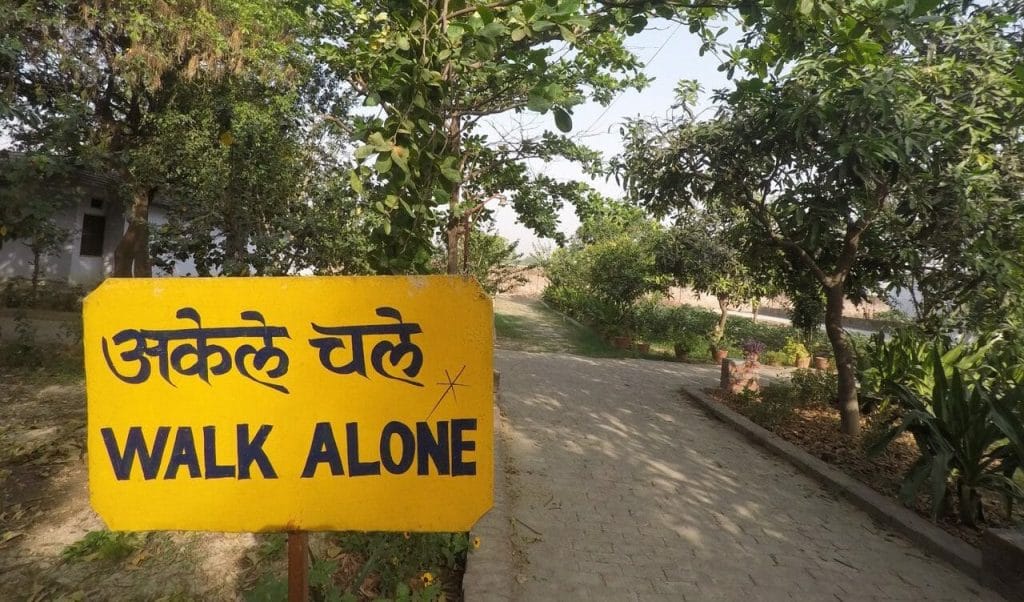
On the tenth day, when we could talk again, I noticed that all the people from India were extremely happy and exhilarated and their happiness was so contagious that we foreigners also became very happy.
It was the first time in 10 days that we had the opportunity to talk to them and I discovered that some of them were taking the course for the second or even third time.
They were very friendly and cheerful and assured us that Vipassana is the best meditation technique.
The tenth day was very relaxing compared to the others. We only had the three mandatory sittings, and also learned the meditation of loving kindness (Metta technique), which consists of repeating phrases such as: “May all beings be happy, be peaceful, compassionate…” “May I generate love, true love, compassionate love…” “May all beings share my peace, my harmony…”
On the eleventh day, we woke up at 4:00 AM for the final time, went to the mini hall to get instructions on how to practice the meditation back home, and then on to the Dhamma Hall for the last group meditation session, but this time only the metta technique was practiced.
I left the center feeling a bit strange but still accompanied some people from the course to meditate at the site where Buddha gave his first speech.
We also visited some tourist attractions in Sarnath.
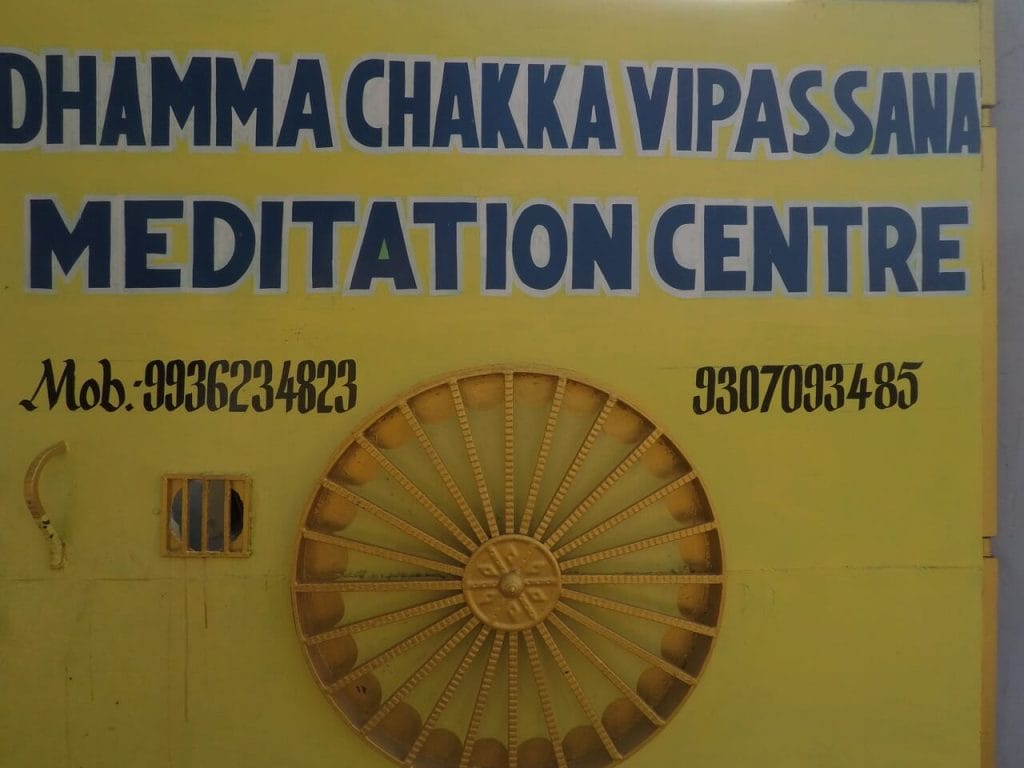
I arrived in Varanasi feeling that something in me had changed. Not only because of the course, but also because of all the experiences I had in Varanasi, and in fact on my whole trip to India.
Doing this 10-day Vipassana retreat, and particularly not talking during those days, was very beneficial to me!
At the end, I heard a lady saying that this course was the hardest thing she has ever done, but I’m sure that those who worked diligently and patiently got some great results.
Vipassana Meditation Benefits
Having taken my first meditation course, I’m finally now able to meditate and enjoy its benefits.
Some of them I experienced during the first days of the course, others only became clear after meditating daily for almost a month now, and others are yet to come.
What I’ve noticed so far is :
My posture is better
Since the first day, I noticed that my posture was improving.
Every time I left the Dhamma Hall I was clumsy for a bit but for the first time in my life I was able to sit instinctively with my back straight and my two feet on the ground.
The posture that I always wanted to have, whether walking or sitting, I have now. I must be vigilant to keep it!
My hearing got better
I’m the kind of person who talks more than I listen. And because of that, my hearing wasn’t very sensitive.
During the meditation course, I grew to be able to identify who was leaving/arriving in the Dhamma Hall, just by listening to their steps and working out where they were sitting. All with my eyes closed.
I believe now I can pay much more attention when someone is talking to me, and also to the sounds that surround me.
I calmed down
I’m very dynamic and energetic and want to do 300 things in a day. And this might be the reason why my mind is always racing… Although I’m a calm person, my mind wasn’t at all.
When practicing the vipassana meditation, I feel calmer and relaxed. My mind still races, connecting one thing to another, but much less than before.
Set time apart from technology
In the beginning, I thought that I would go crazy without talking for ten days, but honestly, I loved it!
During the meditation course, I realised how attached we have become to our phones, computers and the Internet.
It seems like we cannot spend a single day without checking our Facebook status, Instagram account or emails. Really???
Of course, we can, but we are so dependent on them that it feels as if we can’t. In my case, I also include my blog, because it’s so much a part of me.
But since I left the course, I’ve been using social networks and the Internet less, and I will also establish a day when I won’t use phones, computers or the Internet at all.
I also hope to have the opportunity to do other retreats that require noble silence!
Live the present
Because many things have happened in my life that I’ve never imagined, I’m not the kind of person who worries too much about the future. However, I’m always thinking: – What’s next?
During the course, I learned how to enjoy the moment that I’m living in and neutralize the thoughts that are not related to it.
I’m less attached to material things
During the meditation course, we learned not to form any attachment or aversion to our sensations. And we must relate it with everything in life.
Being attached to anything just make us suffer when we lose it.
So, less attachment, less suffering, less misery. This was actually mentioned on the first day of the course, but it’s a constant exercise.
I feel stronger to face the vicissitudes of life
Another lesson learned was that every sensation arises and passes away, as everything else in life.
We all have problems and hard times, but we have to remember that nothing is forever. And we have to keep that in mind at all times.
According to the instructions received on the last day, we have to meditate for one hour twice a day, practicing the Vipassana and Metta techniques, for at least one year.
It seems a lot to take two hours of your day to meditate. I thought the same.
But I can confess that during the almost one month since I left the Vipassana retreat, I’ve meditated every day, and I really feel the necessity to do it.
The same way my body wants to go to the gym to exercise, my mind wants to meditate to set time apart from problems and be worry-free and relaxed.
Meditation is becoming more and more popular but many people still don’t know its benefits.
I’m really glad that I finally took a meditation course and incorporated it into my daily life. I feel a much better person now.
Namaste!
Planning a Vipassana Retreat in Sarnath – Varanasi
Where is Varanasi located?
Varanasi is located on the banks of the Ganges in the Uttar Pradesh state of North India, 320Km (200mi) south-east of the state capital, Lucknow, and 121Km (75mi) east of Allahabad (see map here).
How to get there?
You can get to Varanasi by bus, train or airplane.
By bus or train, is recommendable to buy the ticket with a travel agency, but you can check the train schedule on the Indian Railways website.
By airplane, you can use Varanasi’s international airport, which is located one hour from the city center. Some of the airline companies that fly to Varanasi are: Indigo, SpiceJet, Air India and Hahn Air.
Book your flights with Skyscanner, that is the website that I use and trust.
Best time to go?
The best time to go to Varanasi is from October to March when the temperature is mild, and also some festivals happen, including Diwali (the festival of lights), and the Ganga Festival.
I visited Varanasi at the end of April and the temperature was almost unbearable (around 40C, 104F, every day).
Where to stay in Varanasi?
The best place to stay in Varanasi is close to Dasaswamedh Ghat, one of the main ghats in the city.
Here is a list of some hotels that I would recommend:
- Luxury: Brijrama Palace
- Great Value for Money: Ganges Inn and Shivakash Guest House.
- Budget: Marigold Guest House
Travel Costs
• Five months travel insurance: US$ 256 with World Nomads.
• One night at Rivera Palace: Rs 1700 (US$ 26)
• Two nights at Ganges Inn Hotel: Rs 2000 (US$ 32)
• Bus from Agra to Varanasi: Rs 1850 (US$ 28)
• Boat Trip on the Ganges River: Rs 100 (US$ 1.50)
* The Vipassana retreat is donation based and participants can donate how much they want in the end f the course.
Have you ever taken a meditation course? How was your experience? Share it with us in the comments below 😉
Don’t forget to save these pins for later 😉
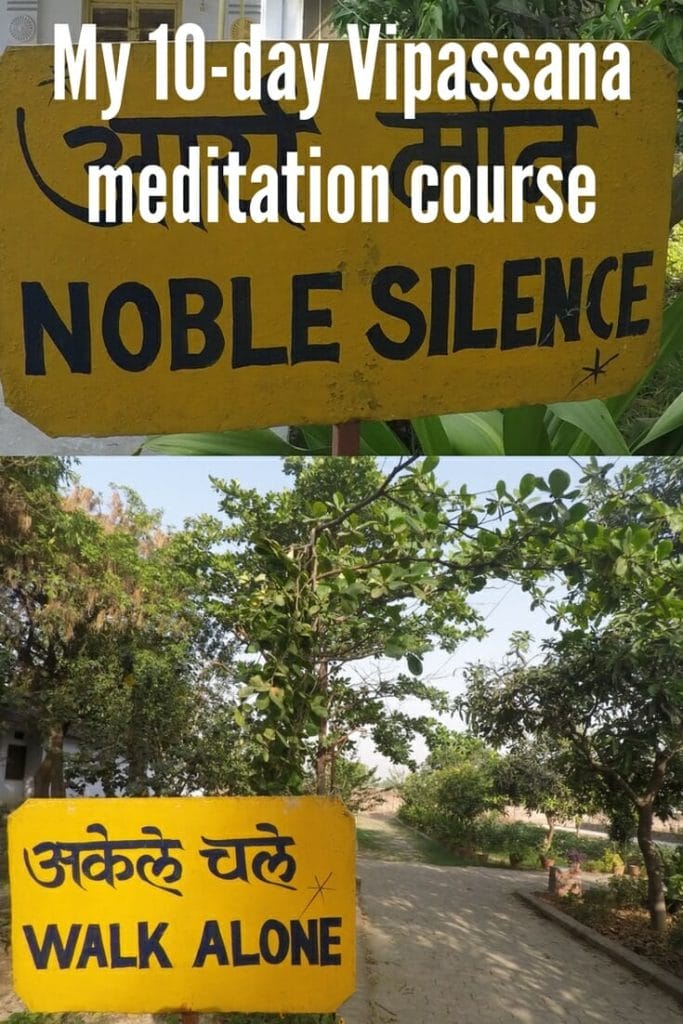
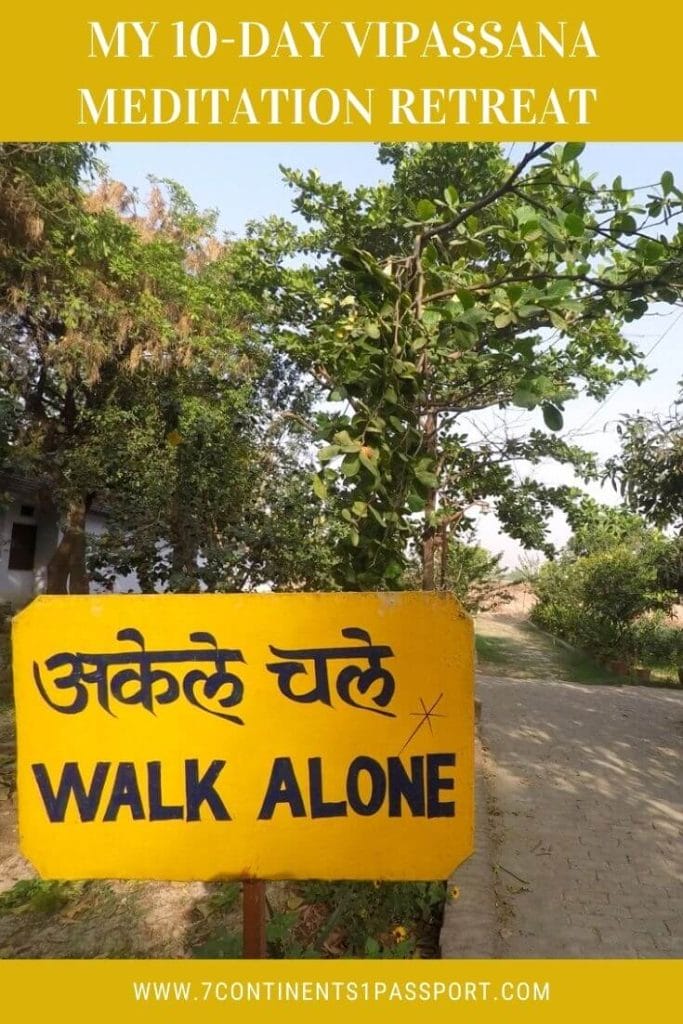
- Book Your Flight Find deals on airlines on my favorite search engine: Skyscanner. Be sure to read my How to find cheap flights article.
- Rent A Car Rental Cars is a great site for comparing car prices to find the best deal.
- Book Accommodation Booking.com is my favorite hotel search engine. But Hotels.com and Hilton Hotels have very interesting reward programs.
- Protect Your Trip Don’t forget travel insurance! I always use World Nomads for short-term trips and SafetyWing for long-term ones. Find out why Travel Insurance: Much More Than a Precaution, a Necessity.
- Book Tours in Advance Book unforgettable experiences and skip-the-line tickets with GetYourGuide or Viator .
- Book Ground Transportation BookaWay offers a stress-free experience with secure payments and no hidden fees. You pay online and receive your itinerary by email.
- Luggage Solutions Rent your luggage with Cargo or if you need to drop off your own luggage and enjoy your time without dragging it all over a city, find a LuggageHero shop here.
- Get a Travel Card Revolut Card is a pre-paid debit card that enables cash machine withdrawals in 120 countries. I’ve been using my Revolut Card for over a year and never paid foreign-transaction fees again. Get your Revolut Card with free shipping here.
- Packing Guide Check out my How to Pack a Carry-on Luggage For a Five-month Trip to help you start packing for your trip. Don’t forget your camera, chargers and other useful travel accessories. World Nomads provides travel insurance for travelers in over 100 countries. As an affiliate, we receive a fee when you get a quote from World Nomads using this link. We do not represent World Nomads. This is information only and not a recommendation to buy travel insurance.

Meditation is so important and it’s been something I’ve been practicing for the last couple of months, and it has been such an improvement onto my stressful life. Here’s the thing, I’m a Parisian living a stressful life and also an adventurer who’s wiling to settle in the Middle East for at least a couple of years. All of those decisions makes it hard to be calm and zen. Having the opportunity to go on a 10-days journey is quite amazing! I would do it without thinking!
Hey Liana.
Thx for commenting here 😉
Yes, it is. I’m glad that I finally started meditating and I hope to keep doing that for such a long time.
Which course did you take?
I’m reading a book called Get some headspace, and it’s about meditation. I’d like to learn another technique just to compare and get more knowledge in the field.
I can image how hard it’s for you all those changes, and I wish you the best of luck.
Meditation is a way to calm us down and to have a time to ourselves, which is so hard nowadays with our busy life.
If you get a chance to take a long course please do, and you will see how it’s gonna change you 😉
Namaste!
I am going to take it from this coming sunday and so nervious now since i read all article about meditation.
applied for a program without any idea, and turned out i am actually scared :((
But hopefully i can finish the course.
Hey Hyun.
Please do no the scared!
I was exactly like this as well, and in the end I loved the course.
The beginning is very tough, specially if you’ve never meditated before, but after four, five days, you will feel better.
Where are you taking the course?
If I finished you can finish too 😉
Stay strong!
Thank you so much for sharing your experience. It is so interesting and inspirational to read. And for me very helpful, since I will take part of a Vipassana Course in November in India (Lucknow). I’m very exited and also a bit “afraid”.
Best wishes from Germany,
Marilena
Hey Marilena.
Thank you for reading and commenting though !!
So good to hear that you will take a Vipassana meditation course 😉
The infrastructure might be very similar to the center I attended, and it will definitely be a challenge. But do your best and you will see the results for sure.
I hope I can do this course again in the future. It brings so many insights and change you in certain ways that you don’t even expect.
Be strong and all the best Marilena!!
Love the name of your website btw 😉
Dear. Pericles.
thank you for your advice.
i am going tomorrow in Korea, actually one of my Brazilian friend gave me link of vipassana and now she is in Medi in Taiwan that i can’t contact now, when i go in she will be out.
I feel better now. i will tell you how i feel after i finish……
thanks alot
Great !!
My pleasure Hyun 🙂
Yes, please let me know how was it.
First and second day might be hard, but in the end you will see the results.
You will never be the same after this course 😉
All the best!!